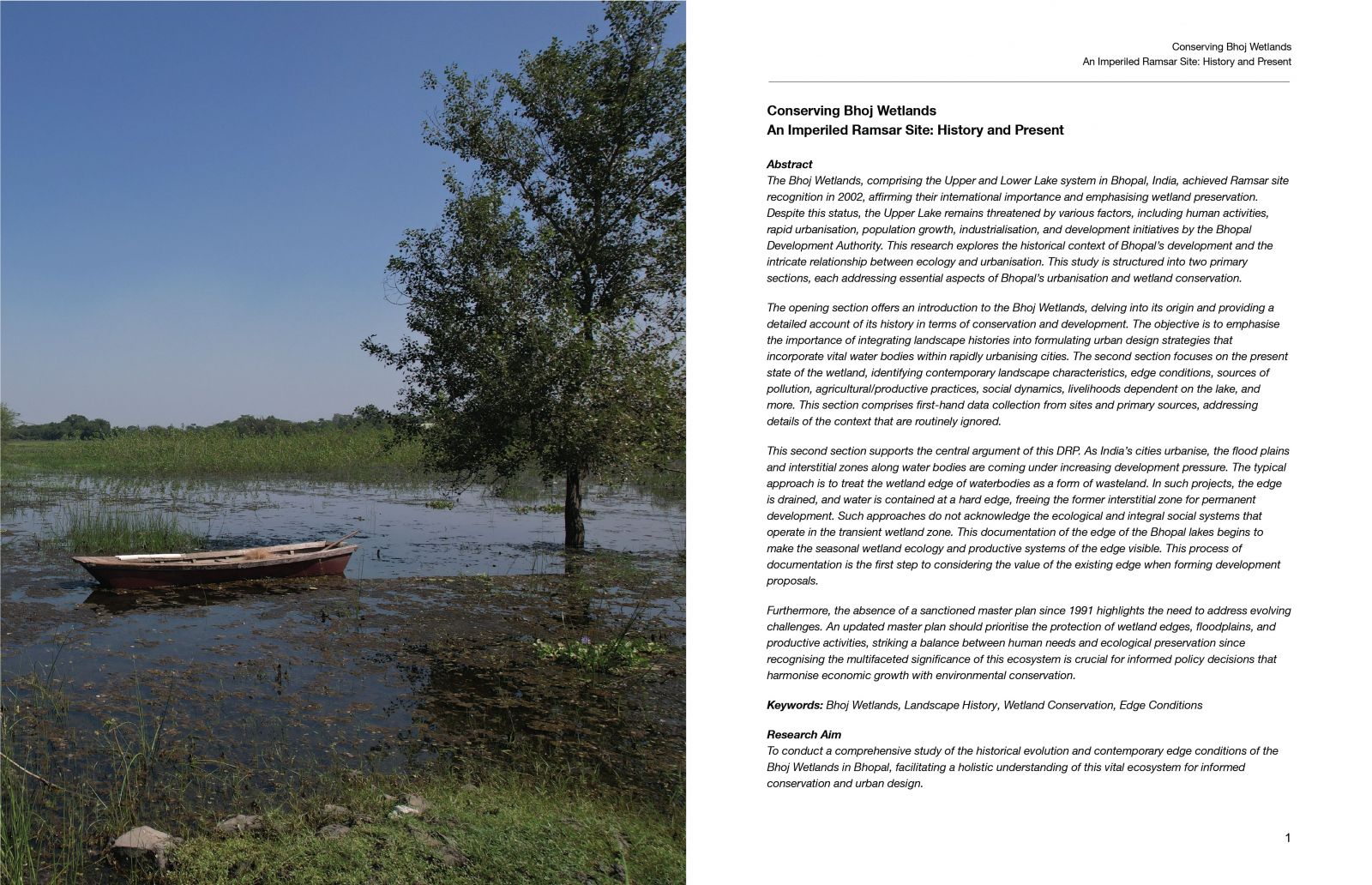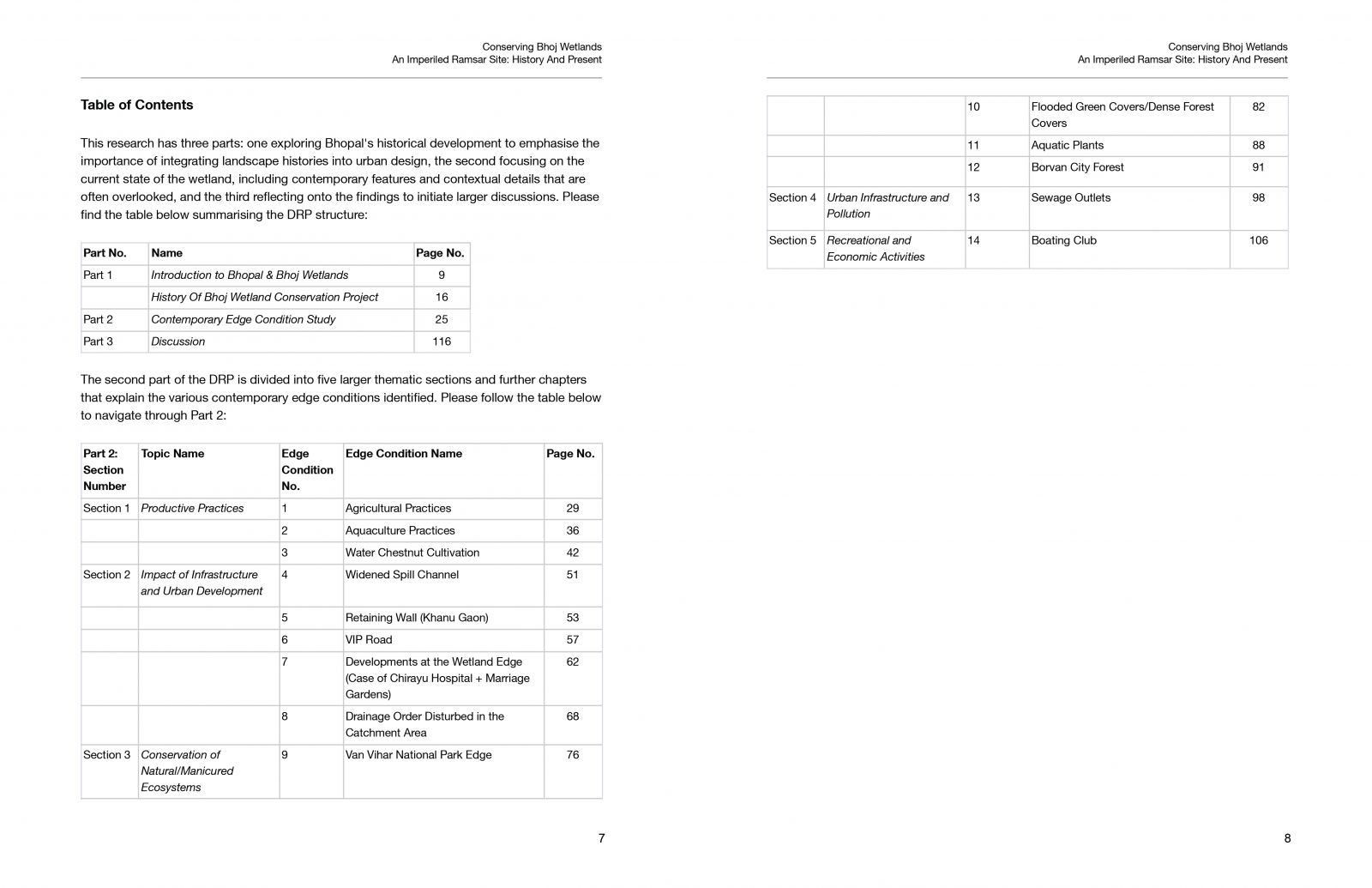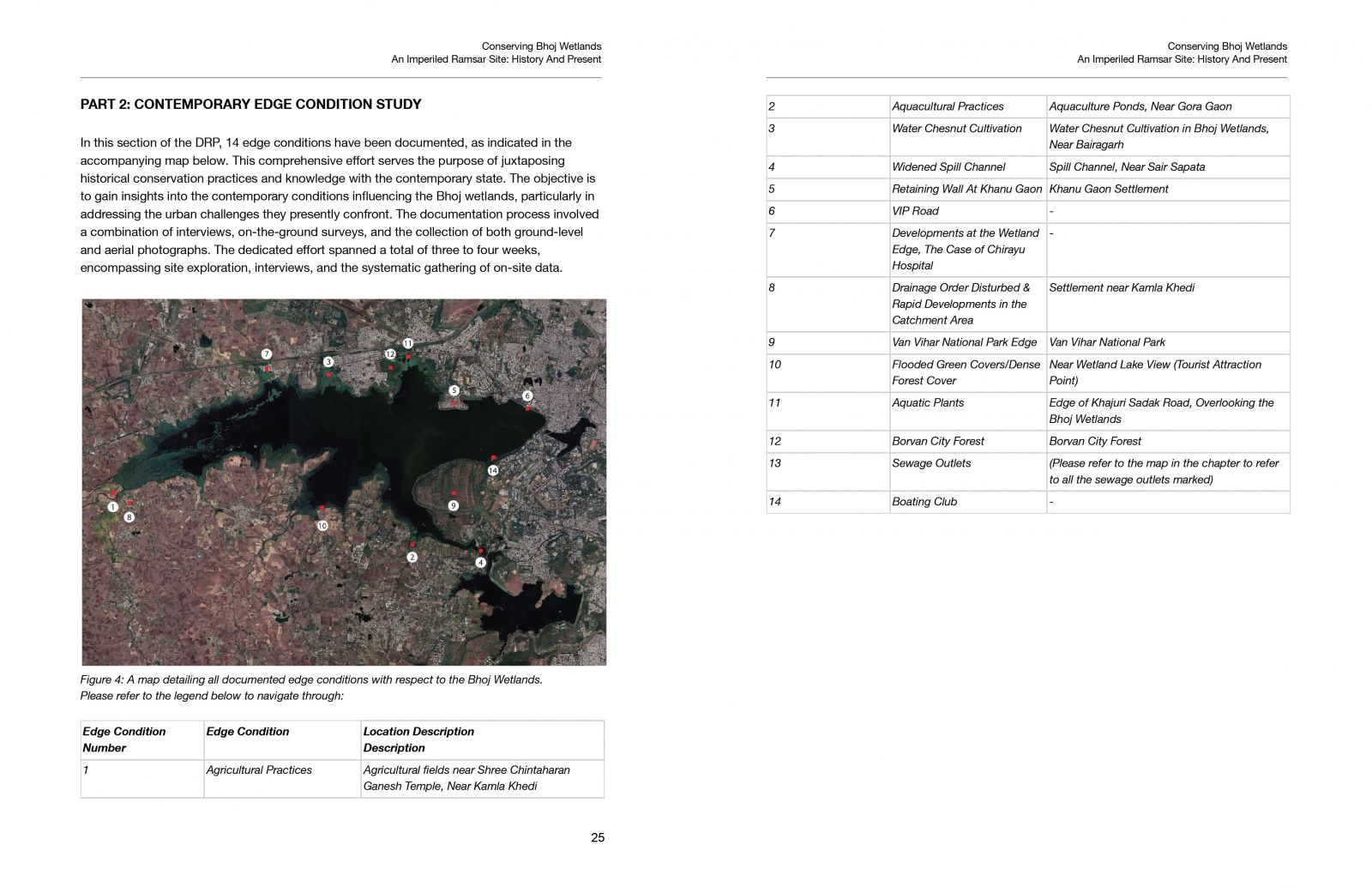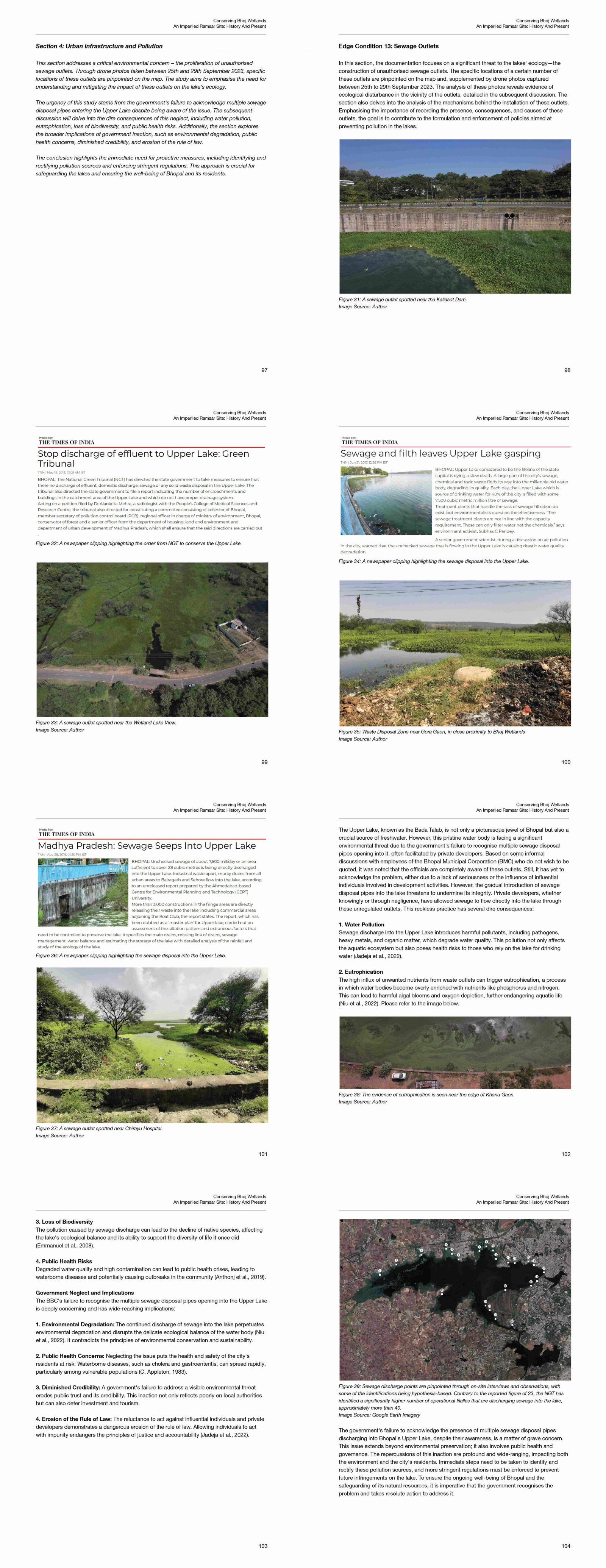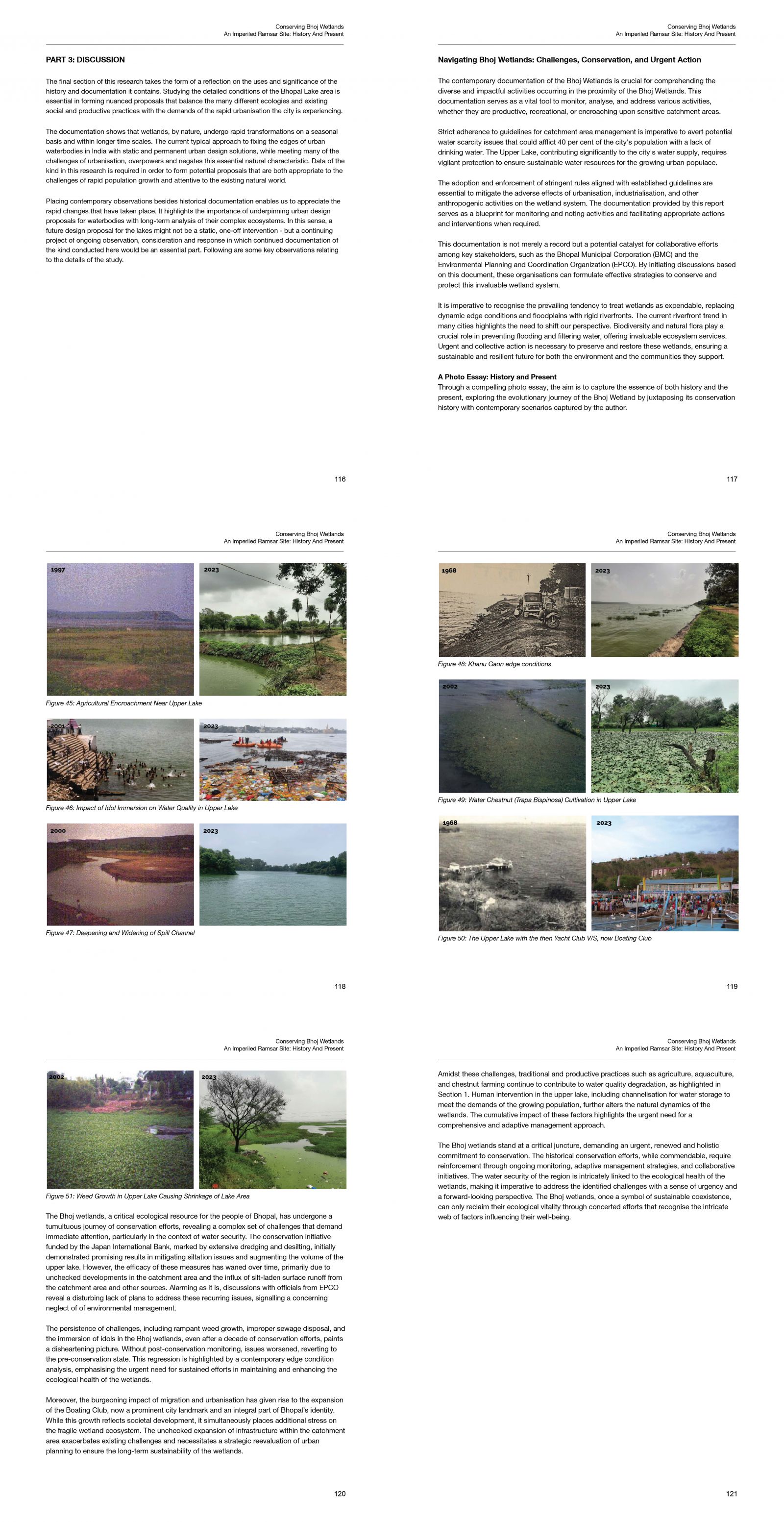Your browser is out-of-date!
For a richer surfing experience on our website, please update your browser. Update my browser now!
For a richer surfing experience on our website, please update your browser. Update my browser now!
Bhoj Wetlands, including the Upper and Lower Lake system in Bhopal, India, gained Ramsar site recognition in 2002, underscoring their global importance for wetland preservation. Despite this status, the Upper Lake faces threats from human activities, urbanisation, population growth, industrialisation, and development initiatives. This research, structured into two sections, explores Bhopal's development history and the intricate relationship between ecology and urbanisation. The first introduces the Bhoj Wetlands, emphasising the importance of integrating their history into urban design strategies. The second examines the current state of the wetland, addressing landscape characteristics, pollution sources, social dynamics, and more. This section supports the argument that the typical approach of treating wetland edges as wasteland ignores their ecological and social systems. The documentation of Bhopal lakes' edges aims to highlight their value in development proposals. The absence of a master plan since 1991 underscores the need for an updated plan that prioritises wetland protection, balancing human needs and ecological preservation for informed policy decisions harmonising economic growth with environmental conservation. Read the complete DRP Report here.
View Additional Work